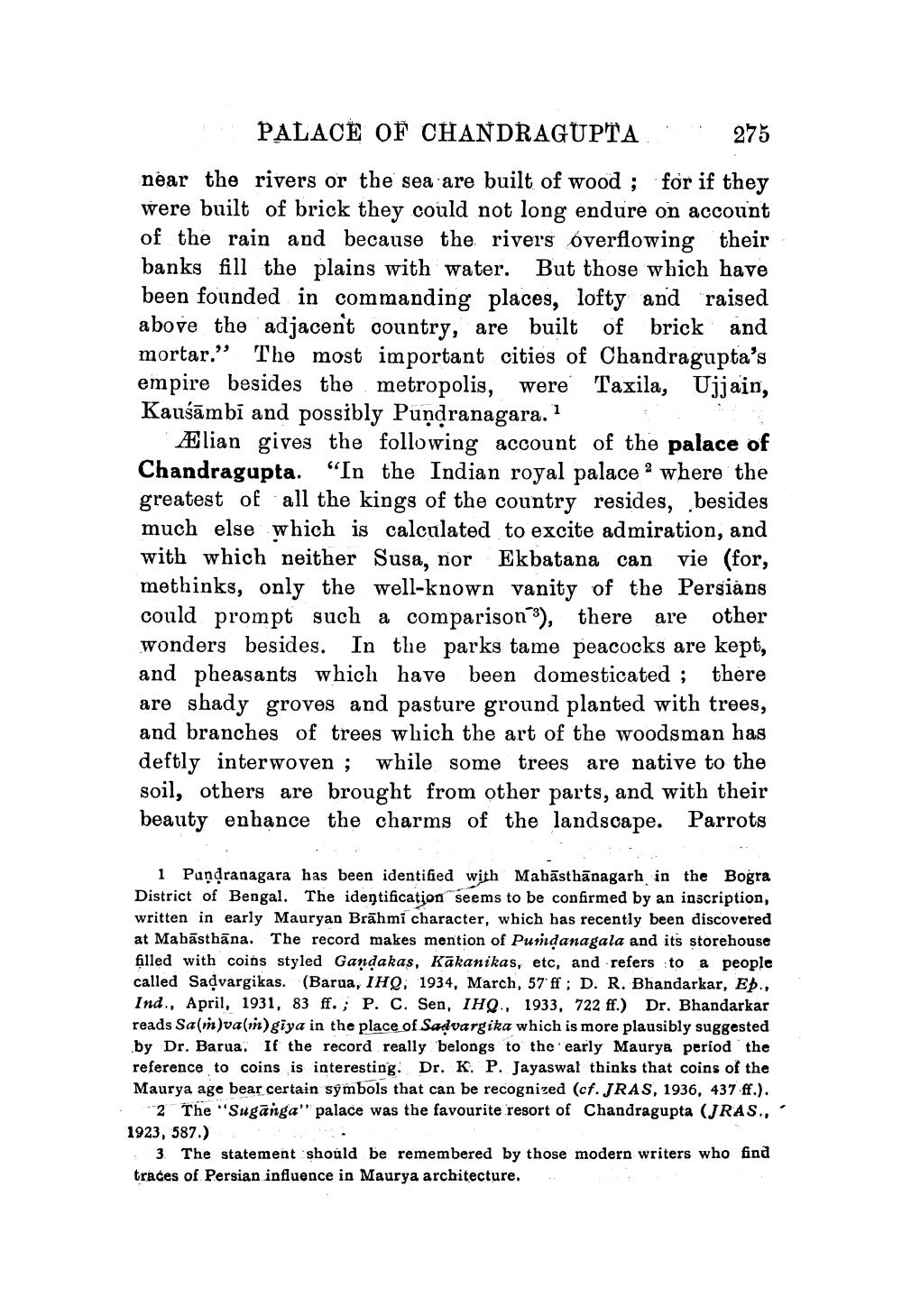________________
PALACE OF CHANDRAGUPTA
275
near the rivers or the sea are built of wood; for if they were built of brick they could not long endure on account of the rain and because the rivers overflowing their banks fill the plains with water. But those which have been founded in commanding places, lofty and raised above the adjacent country, are built of brick and mortar." The most important cities of Chandragupta's empire besides the metropolis, were Taxila, Ujjain, Kausambi and possibly Pundranagara.1
2
Elian gives the following account of the palace of Chandragupta. "In the Indian royal palace where the greatest of all the kings of the country resides, besides much else which is calculated to excite admiration, and with which neither Susa, nor Ekbatana can vie (for, methinks, only the well-known vanity of the Persians could prompt such a comparison 3), there are other wonders besides. In the parks tame peacocks are kept, and pheasants which have been domesticated; there are shady groves and pasture ground planted with trees, and branches of trees which the art of the woodsman has deftly interwoven ; while some trees are native to the soil, others are brought from other parts, and with their beauty enhance the charms of the landscape. Parrots
1 Pundranagara has been identified with Mahasthanagarh in the Bogra District of Bengal. The identification seems to be confirmed by an inscription, written in early Mauryan Brahmi character, which has recently been discovered at Mahasthāna. The record makes mention of Pumḍanagala and its storehouse filled with coins styled Gandakas, Kakanikas, etc, and refers to a people called Saḍvargikas. (Barua, IHQ, 1934, March, 57 ff; D. R. Bhandarkar, Ep., Ind., April, 1931, 83 ff.; P. C. Sen, IHQ., 1933, 722 ff.) Dr. Bhandarkar reads Sa(m)va(m)giya in the place of Sadvargika which is more plausibly suggested by Dr. Barua. If the record really belongs to the early Maurya period the reference to coins is interesting. Dr. K. P. Jayaswal thinks that coins of the Maurya age bear certain symbols that can be recognized (cf. JRAS, 1936, 437 ff.).
2 The "Suganga" palace was the favourite resort of Chandragupta (JRAS., ́ 1923, 587.)
3 The statement should be remembered by those modern writers who find traces of Persian influence in Maurya architecture.




